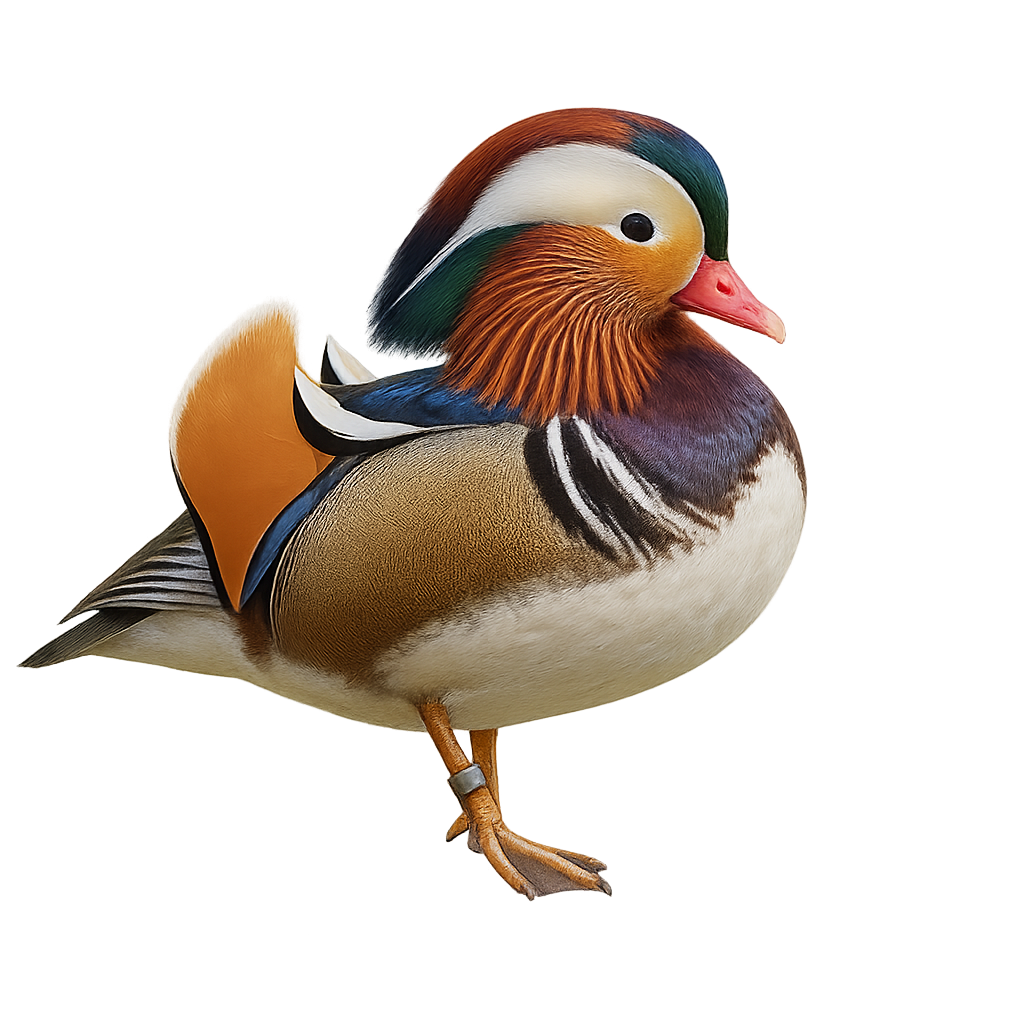Observe and photograph a species in its natural habitat
Learn where and when to observe a species in the wild, how to recognize it in the field, and what habitats it lives in. Get photography tips adapted to its behavior and capture stunning images without disturbing the animal. For full details, open the complete profile in the WildlifePhotographer app.
Mandarin duck
Scientific name: Aix galericulata

IUCN Status: Least Concern
Family: ANATIDAE
Group: Birds
Shyness: Suspicious
Safe distance: 30 m
Breeding season / Courtship: 01.10-31.12
Gestation: 28 à 30 jours
Births: 01.05-31.07
Habitat:
Lakes, rivers, and ponds in forested regions of East Asia and temperate Europe, notably in China, Japan, and Korea, and near water bodies
Description:
The Mandarin Duck is a spectacular waterfowl, easily recognizable by its vibrant and colorful plumage, particularly in the male. The male displays an impressive mix of bright colors, including orange, blue, and green, with a distinctive crest on the head and feathers on the sides of the neck that resemble scales. The female, more subdued, has brown plumage with subtle white accents around the eyes and bill.
Native to East Asia, the Mandarin Duck is now widely distributed in Europe and North America, often seen in parks and gardens around bodies of water. This duck prefers calm waters in lakes, ponds, and rivers, where it feeds mainly on seeds, fruits, insects, and small crustaceans. Although the Mandarin Duck is not considered endangered, its natural habitat can be threatened by pollution and the loss of wetland areas.
Recommended lens:
>=300 mm
Photography tips:
Use a telephoto lens to photograph the Mandarin duck, especially when it is swimming or resting on the banks. The soft light of early morning or evening is ideal for capturing the vibrance of its colors and details. Be discreet and respect their space to avoid disturbing their natural behavior, especially during the breeding season.
Ready to take action?
Choose your platform and start your free trial today



